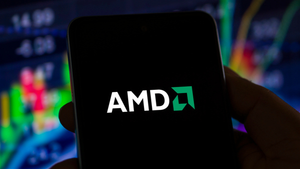
Despite persistent global trade tensions and escalating protectionist policies, foreign investors are channeling an unprecedented volume of capital into U.S. equities, pushing their holdings to record highs. This surge in foreign buying, observed throughout 2025, underscores a deep-seated confidence in the American market's resilience, innovation, and perceived safe-haven status, even as geopolitical uncertainties loom. The influx of international funds is providing significant support to U.S. stock valuations but also raises questions about market concentration and future performance.
A Flood of Capital: Unpacking the Record Foreign Inflow
The scale of foreign investment in U.S. stocks has reached historic levels. Recent data reveals that foreigners have funneled a staggering $290.7 billion into the U.S. stock market in the three months ending June 30, 2025. This robust activity is set to drive foreign holdings up by an estimated $2.8 trillion this year, bringing the total foreign ownership of U.S. stocks to approximately $18 trillion. This figure represents about 30% of the nearly $60 trillion U.S. market, marking the highest share since 1945. As a percentage of total U.S. equities, foreign investors now hold a record 18%, a significant jump from 7% in 2000. Goldman Sachs projects net foreign purchases of U.S. equities to remain strong, forecasting $300 billion in 2025, only a slight decrease from $304 billion in 2024.
This record buying spree is occurring amidst a complex and sometimes contradictory trade landscape. While a "US-China Trade Deal 2025" was announced in May, aiming to reduce tariffs and ease tensions, other indicators point to a new phase of the U.S.-China trade conflict characterized by reciprocal tariff hikes. Furthermore, President Donald Trump has intensified protectionist measures, announcing a sweeping 100% tariff on branded and patented pharmaceutical imports, effective October 1, 2025, unless manufacturing shifts to the U.S. These actions are prompting allied economies to adopt "friend-shoring" and "reshoring" strategies to reduce their reliance on China. Despite these challenges, investors appear to be "conditioned to extreme tariff threats as negotiating tactics," suggesting a longer-term investment horizon that transcends immediate trade uncertainties.
Several key drivers underpin this sustained foreign interest. The U.S. market's undeniable leadership in Artificial Intelligence (AI) is a primary draw. The success and growth of U.S. tech giants such as (NASDAQ: NVDA) Nvidia, (NASDAQ: MSFT) Microsoft, and (NASDAQ: GOOGL) Alphabet, all deeply entrenched in AI development, have made U.S. stocks particularly attractive. Foreign investors are selectively buying into the AI theme, with the U.S. tech sector recording 26 new all-time highs this year. Significant growth in Foreign Direct Investment (FDI) announcements in 2025 is predominantly directed towards AI infrastructure and semiconductors. Additionally, the U.S. market is widely perceived as a stable and robust investment environment, serving as a "safe haven" during periods of global uncertainty. The U.S. has consistently been the top destination for FDI for 13 consecutive years, thanks to its large consumer market, abundant natural resources, expanding economy, and pro-business culture.
Winners and Losers: Corporate Implications of the Investment Wave
The surge in foreign investment has clear implications for various public companies and sectors. Technology companies, especially those at the forefront of AI innovation, stand to be major beneficiaries. Companies like (NASDAQ: NVDA) Nvidia, (NASDAQ: MSFT) Microsoft, and (NASDAQ: GOOGL) Alphabet, which are heavily invested in AI research and development, are directly attracting a significant portion of this foreign capital. Their continued growth and market dominance in the AI space are amplified by this international confidence, potentially driving further stock appreciation and enabling continued investment in cutting-edge technologies. The concentration of foreign investment in these U.S. tech and AI-related companies means these sectors will likely remain a significant driving force in the market.
Conversely, companies heavily reliant on pharmaceutical imports, particularly branded and patented drugs, face potential headwinds due to the newly announced 100% tariff effective October 1, 2025. This policy aims to incentivize domestic manufacturing, but in the short term, it could significantly increase costs for companies that currently import these products. Pharmaceutical distributors, retailers, and even some healthcare providers might see their profit margins squeezed, or be forced to pass on higher costs to consumers. This could lead to strategic pivots for these companies, including exploring options for reshoring manufacturing or diversifying their supply chains, which could involve substantial capital expenditure and operational adjustments.
Beyond direct beneficiaries and those facing tariffs, the overall market liquidity and valuation environment are impacted. Companies across various sectors benefit from the general uplift in market sentiment and the increased demand for U.S. equities. However, the record buying also raises concerns about potential overvaluation, as foreign investors historically tend to enter late in a bull market, and U.S. equity valuations are already considered high. This could mean that while many companies benefit from the capital inflow, their stock prices might be trading at premium valuations, making them more susceptible to corrections if market sentiment shifts or earnings disappoint.
Wider Significance: A Shifting Global Financial Landscape
This unprecedented influx of foreign capital into U.S. equities, even amidst trade tensions, signals a profound shift in the global financial landscape. It underscores the "U.S. exceptionalism" narrative, where the American market is perceived as a beacon of stability and growth, particularly in technologically advanced sectors like AI. This trend fits into broader industry patterns of digital transformation and the increasing importance of intellectual property and innovation in driving economic value. The U.S. market's structural advantages, including superior liquidity, scale, and growth potential, continue to attract global investors. The S&P 500's market capitalization is substantially larger than its global counterparts, with nearly three times higher turnover, reinforcing its appeal.
The protectionist policies, such as the pharmaceutical tariffs and the broader push for "friend-shoring" and "reshoring," have significant ripple effects. While intended to bolster domestic industries, they introduce supply chain risks and could lead to increased costs for consumers and businesses globally. This could encourage other nations to re-evaluate their own trade dependencies and manufacturing strategies, potentially leading to a more fragmented global economy. Regulatory and policy implications are also substantial, with governments worldwide grappling with how to balance free trade with national security and economic self-reliance. The Federal Reserve's recent rate cut in September 2025 (25 basis points to 4.00%-4.25%) has already propelled U.S. stocks to new records, demonstrating the intertwined nature of monetary policy and global capital flows.
Historically, periods of significant foreign investment often coincide with strong economic performance, but also with concerns about market overheating. The current situation, with foreign investors holding the highest share of U.S. stocks since 1945, draws parallels to past cycles where such inflows preceded periods of market volatility. However, the unique drivers of this current wave, particularly the dominance of AI and the perception of the U.S. as a safe haven, differentiate it from previous eras. The evolving U.S.-China trade industrial policy continues to face hurdles related to regulatory complexities and shallow domestic supply chains, adding another layer of uncertainty to the global economic outlook.
What Comes Next: Navigating Opportunities and Challenges
Looking ahead, the short-term outlook suggests continued robust support for U.S. equity valuations due to sustained foreign demand. The concentration of this investment in tech and AI-related companies indicates that these sectors will likely remain market leaders. However, this also presents a challenge: any shift in sentiment or disappointing returns from AI investments could expose these highly owned stocks to vulnerability, potentially leading to significant market corrections. The upcoming PCE Price Index release and ongoing inflation concerns will also heavily influence expectations for future Federal Reserve rate cuts, which could either tighten financial conditions or provide further impetus to equity markets.
In the long term, the dynamics of global trade and investment are likely to become even more complex. The emphasis on "friend-shoring" and "reshoring" could lead to a restructuring of global supply chains, creating both opportunities for domestic manufacturers and challenges for international trade-dependent businesses. Market opportunities may emerge in sectors that benefit from increased domestic production and technological innovation, while challenges will persist for companies navigating higher tariffs and a potentially less integrated global economy. Investors may also see a continued gradual decline in the U.S. dollar, which could make unhedged U.S. assets more attractive to foreign buyers, but also impact the returns for U.S. investors in international markets.
Potential strategic pivots for companies will include a greater focus on supply chain resilience, diversification of manufacturing bases, and increased investment in automation and AI to mitigate labor costs and enhance efficiency. For investors, the current environment necessitates a careful balance between capitalizing on the strong performance of U.S. tech and AI, and considering the benefits of international diversification. While the U.S. market has shown "exceptionalism," the S&P 500 has underperformed equity benchmarks in Canada, Mexico, Brazil, Japan, and China in 2025, suggesting that lucrative returns may also be found outside the U.S.
Comprehensive Wrap-up: A Market at a Crossroads
In summary, the record pace of foreign investment into U.S. stocks in 2025, despite ongoing trade tensions, is a testament to the enduring appeal of the American market. Key takeaways include the significant role of AI dominance, the perception of the U.S. as a safe haven, and strong economic fundamentals as primary drivers of this capital inflow. However, this trend also brings challenges, including potential market overvaluation and the disruptive impact of protectionist trade policies.
Moving forward, the market will likely remain supported by this foreign demand, but investors must closely monitor several factors. The trajectory of inflation and the Federal Reserve's monetary policy decisions will be crucial in shaping market sentiment. The evolving U.S.-China trade relationship and the implementation of new tariffs will continue to introduce geopolitical and economic uncertainties. Finally, while U.S. tech and AI companies remain attractive, the potential for underperformance relative to global markets suggests that a diversified investment strategy may be increasingly important. Investors should watch for further developments in trade policy, corporate earnings in key sectors, and global economic indicators in the coming months to navigate this dynamic financial landscape.
This content is intended for informational purposes only and is not financial advice.







